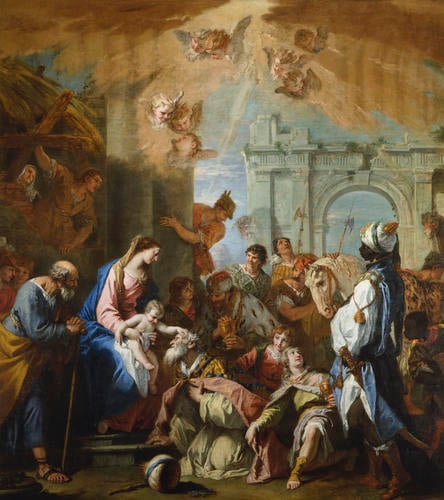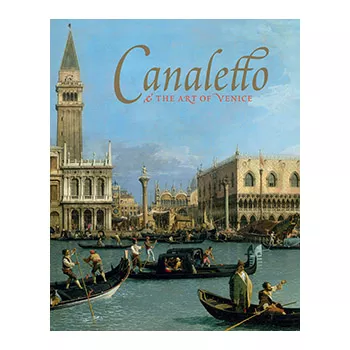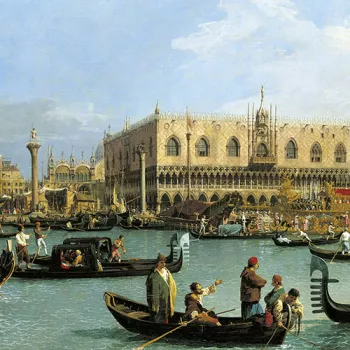The Adoration of the Kings Dated 1726
Oil on canvas | 325.5 x 291.5 cm (support, canvas/panel/stretcher external) | RCIN 405743
-
The Venetian artist Sebastiano Ricci travelled extensively in Europe, working all over Italy and in Vienna and London. His style developed from the late baroque of Luca Giordano to the delicacy and elegance of the rococo. On his return to Venice from England in 1716 Sebastiano, with his nephew Marco, produced the series of seven large paintings of New Testament subjects to which this picture belongs. Marco contributed the architectural backgrounds. In 1742 Joseph Smith had the paintings engraved by J.M. Liotard and they were described in 1749 in a volume published by Smith's protegé Giambattista Pasquali.
In this painting of the arrival of the Magi at the nativity, Sebastiano has re-created the magnificence and drama of three great kings with splendid retinues adoring the Christ Child, developing the work from his study of three paintings of the subject by Veronese dating from the early 1570s. The most influential of these was the Adoration of the Kings of 1573, painted for the church of San Silvestro, Venice. Sebastiano's version has all the grandeur and many of the details of Veronese's, including the imposing architectural setting and low viewpoint, the columns and classical arch with figures in the spandrels juxtaposed with the wood of the stable, and the descending shaft of light with angels and cherubim, but Ricci translates Veronese into eighteenth-century elegance. The use of more striking colours, more elegant figures and dramatic contrasts of light and dark (including the juxtaposition of the white Madonna and the figure of Balthasar, a Black man) creates a greater theatrical effect. Sebastiano's painting, as well as Veronese's. inspired his successors, such as Giambattista Tiepolo's powerful and sumptuous interpretation of the subject painted by 1753 for the Benedictine Abbey of Schwarzach in Franconia (now Munich, Alte Pinakothek).
Six of the series are still in the Royal Collection; two are on long-term loan to the National Trust at Osterley House, and one is lost. The Royal Collection also holds a number of preparatory studies for this painting in the Royal Library (see RCINs 907089 and 907091). It has been suggested that the series was commissioned by a member of the House of Savoy in Turin, for whom Sebastiano and Marco Ricci undertook many commissions in the 1720s and acquired by Joseph Smith when the commission fell through; however it is more likely that Smith commissioned the series for a specific room in his palazzo, hanging them in distinctive Venetian panel frames rather than having them set in the wall panelling. His ownership of sixteen preparatory drawings for the Adoration of the Magi may indicate that he was involved with the project from the outset. Another painting in the series is dated 1724 so that 1726, the date painted on the steps, could mark the completion of the group. George Knox has outlined the way in which the series might have been hung in a single room in Smith's house in Venice, before the house was altered in the 1740s, when the series could have been displayed in two rooms.
A view published by Pyne in October 1816 showed Sebastiano Ricci's Adoration hanging at the far end of the King's Gallery, Kensington Palace; however, by that date the painting had already been transferred to Hampton Court.
Dated on the steps: MDCCXXVI
Catalogue entry adapted from George III & Queen Charlotte: Patronage, Collecting and Court Taste, London, 2004 and Canaletto & the Art of Venice, London, 2017.Provenance
Acquired in 1762 by George III from Joseph Smith, British Consul in Venice (Italian List no 25); recorded in the King's Gallery at Kensington Palace in 1818 (no 357)
-
Creator(s)
Acquirer(s)
-
Medium and techniques
Oil on canvas
Measurements
325.5 x 291.5 cm (support, canvas/panel/stretcher external)
357.5 x 321.8 x 10.0 cm (frame, external)
Category
Object type(s)
Other number(s)
Alternative title(s)
The Adoration of the Magi










